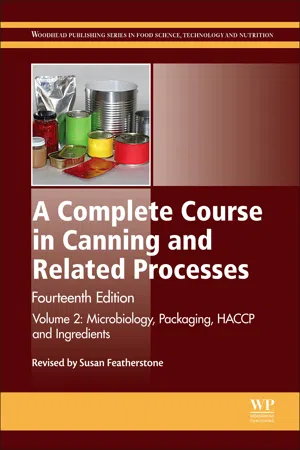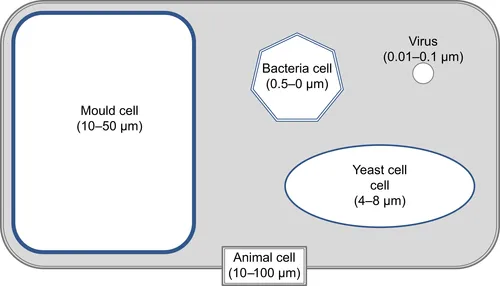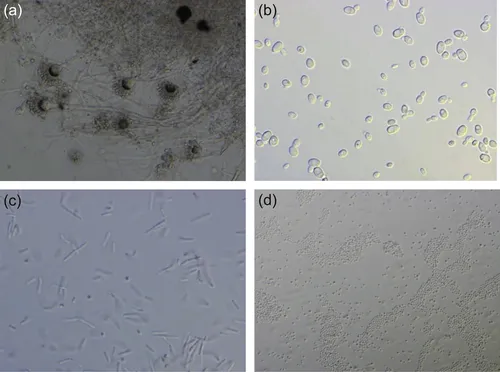
A Complete Course in Canning and Related Processes
Volume 2: Microbiology, Packaging, HACCP and Ingredients
- 376 pages
- English
- ePUB (mobile friendly)
- Available on iOS & Android
A Complete Course in Canning and Related Processes
Volume 2: Microbiology, Packaging, HACCP and Ingredients
About This Book
A Complete Course in Canning is firmly established as a unique and essential guide to canning and related processes. Professionals in the canning industry and students have benefited from successive editions of the book for over 100 years. This major new edition continues that reputation, with extensively revised and expanded coverage. The three-title set is designed to cover all planning, processing, storage and quality control phases undertaken by the canning industry in a detailed, yet accessible fashion. Major changes for the new edition include new chapters on regulation and labelling that contrast the situation in different regions worldwide, updated information on containers for canned foods and new information on validation and optimization of canning processes, among many others.
Frequently asked questions
Information
Microbiology of canned foods
Abstract
Keywords
Bacteria; Botulism; Fermentation; Fungi; Micro-organism; Mould; Spoilage1.1. Introduction
1.1.1. Food microbiology

1.2. Key micro-organisms in food microbiology
1.2.1. Fungi
1.2.1.1. Moulds

1.2.1.2. Yeasts
Table of contents
- Cover image
- Title page
- Table of Contents
- Related titles
- Copyright
- Woodhead Publishing Series in Food Science, Technology and Nutrition
- Preface
- Introduction
- Part One. Microbiological hazards and process control
- Part Two. Containers and ingredients
- Part Three. Safety and quality
- Appendix
- Glossary
- Index